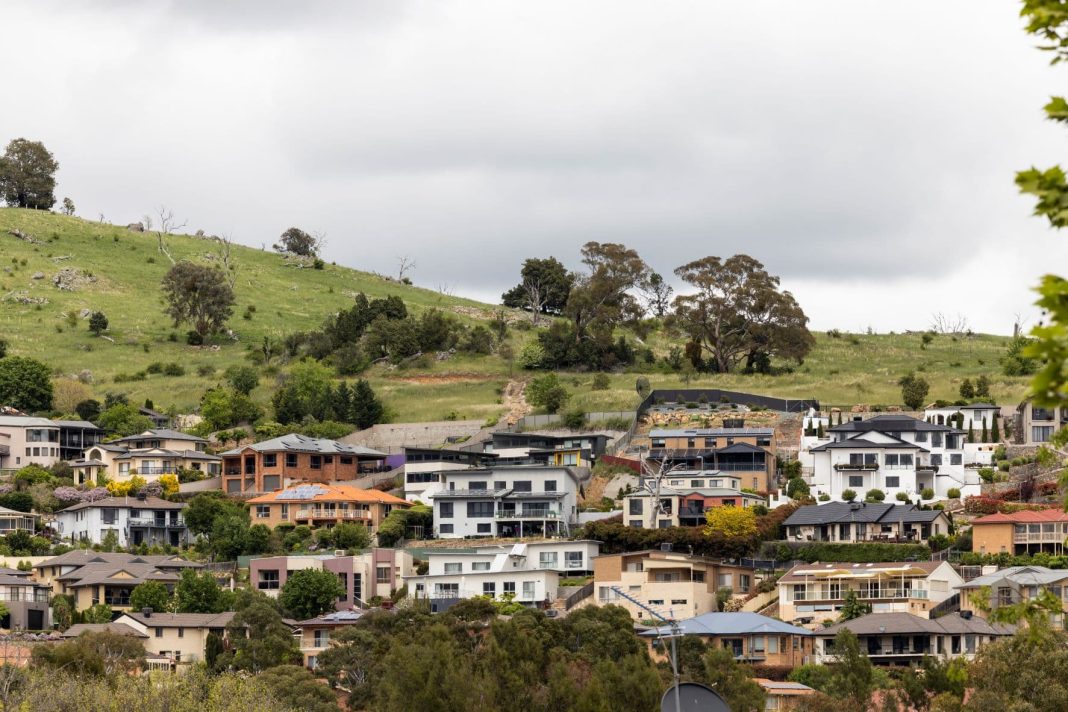The ACT’s total value of house sales profit in the March quarter has risen to an astonishing record of $614,235,830, according to CoreLogic’s latest Pain & Gain Report.
The current housing market frenzy has placed Canberra with the second highest rate of profit-making sales across the greater capital city market at 98.8 per cent, just behind Hobart, which hit 99 per cent.
House sale profitability of resales making a nominal gain in the ACT is at the highest in the country, sitting on 99.7 per cent, up from March quarter’s 99 per cent.
Unit profit-making sales also climbed in the quarter hitting 97.5 per cent, but the record in this sector is 99 per cent, achieved back in 2010 during the three months to November that year.
Resale median gains for the ACT were the third highest in the capital city market at $396,000 for the quarter.
The rate of profit-making sales has increased 60 basis points compared to the previous quarter, smashing the previous record and hitting a new high.
The Report predicts the stretch of rising profitability across the Canberra market may soon reach its peak as higher interest rates and affordability constraints put downward pressure on demand.
Evidence to support this prediction was displayed during May this year, as ACT dwelling values fell by 0.1 per cent, the first time a fall was recorded since July 2019.
ACT gross loss-making sales (March quarter 2022)
| % of all sales | Median hold period (years) | Median loss | Total value of loss |
| 1.2% | 10.3 | -$29,000 | -$1,138,100 |
ACT gross profit-making sales (March quarter 2022)
| % of all sales | Median hold period (years) | Median profit | Total value of profit |
| 98.8% | 9.9 | $396,000 | $614,235,830 |
While Canberrans watch the ACT housing market’s profitability soar, the overall profit-making sales across the Australian market has dropped for the first time since August 2020.
Although head of research, Eliza Owen, said it was only a slight decline, the country can expect to see further falls in the coming months due to several factors.
“Our quarterly Pain & Gain Report is another sign of a changing market for sellers,” she said.
“The figures align with other key indicators such as the slowing growth rate of values, the increasing time it takes to sell a property and a fall in sales volumes at a time when access to credit has become harder and interest rates are on the rise.
“In May, Australian dwelling values posted the first monthly decline in value since September 2020. Against a backdrop of rising interest rates, tighter credit conditions and affordability pressures, we are likely to see the instance of nominal gains from dwelling resales erode throughout 2022, which will have an even greater impact on buyers who have entered the market more recently.”
The median gains and losses on resales across Australia for the March quarter were $290,000 and minus-$33,000 respectively. Higher hold periods typically resulted in nominal capital gains, with median gains of $781,750 for properties held for a period of 30 years or longer.
Outside of this, Ms Owen said properties held between 24 and 26 years, or purchased between 1996 and 1998, also achieved “extremely high gains”.
“Properties were acquired relatively cheaply at this time because of a significant housing market downswing through the mid-‘90s,” she said.
“Our analysis shows the national median hold period is 9.0 years, when properties were purchased during the March quarter of 2013. Since then, Australian dwelling values have increased 70.3 per cent, or the equivalent of around $309,000 in the median dwelling value across Australia.
“Even in a declining market, the extent of Australia’s loss-making sales will largely be in line with future capital growth trends.”
Canberra Daily would love to hear from you about a story idea in the Canberra and surrounding region. Click here to submit a news tip.



